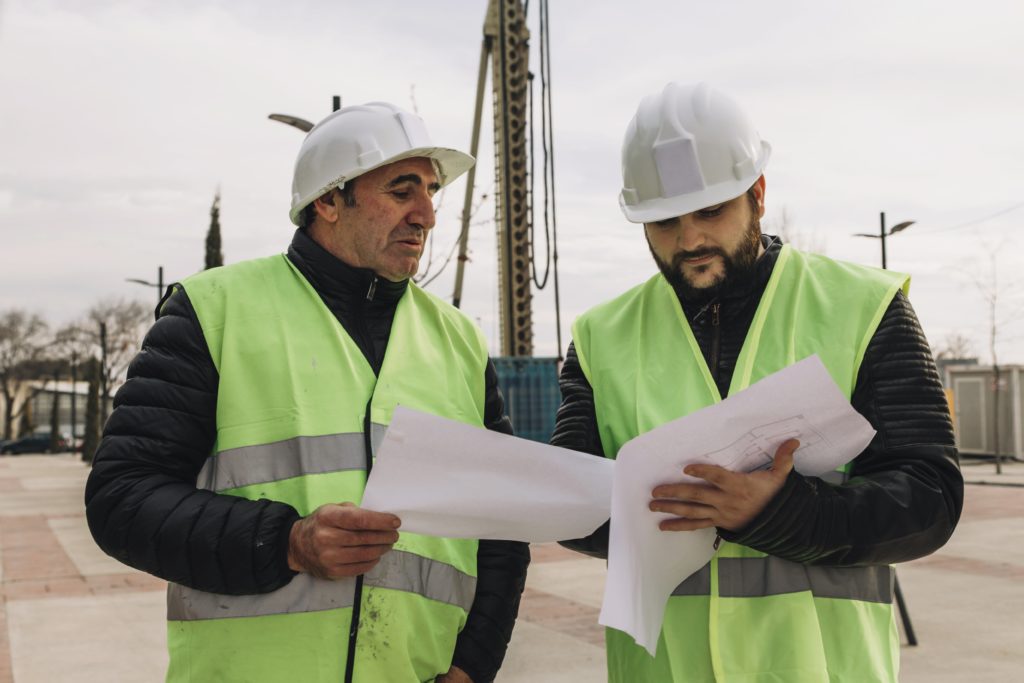A concrete worker does much more than pour concrete onto the ground and hope for the best! These workers have a difficult job that entails installing foundation, constructing buildings out of concrete, applying concrete finishes to a project, building retaining walls, and any other concrete project that comes their way. Sometimes, the work is basic and similar to what they have done in the past, while other times, it is unknown, and some research or trial and error is needed to get the job done right.
For those who do not know, concrete contains three different components, which are water, an aggregate of either rock, sand, or gravel, and cement. The cement is in a powder form and when it is mixed with the other two items it acts as a binding agent. As soon as everything is combined, it needs to be poured before it has time to harden.
Installing concrete is not as easy as it may seem, which is why every contractor has their favorite concrete workers. Concrete contractors need the knowledge, experience, and patience in order to create a solid piece of concrete that will do what it needs at any job site.
For our purposes at the moment, we will discuss the laying down of a concrete foundation.
The first thing that concrete contractors need to do is determine the size, shape, depth, color, and even finish of the concrete. It is important to know all these details prior to the start of the job, as each option can change what is needed dramatically. Once a concrete contractor has all this information, they can begin to prep the site for the work that needs to be done.
The entire area where the foundation will be needs to be cleared and cleaned. That means that all grass, rocks, trees, shrubs, and any garbage needs to be removed and the area should be leveled as much as possible before a base is laid down. It is important that the concrete contractors pay close attention to the edges of the base or the concrete will not cure as it should.
As soon as the base is ready, the forms can be put in place, to ensure that the concrete doesn’t pour out of the area. The forms are normally made of wood, but they can also be plastic or metal. After the forms are where they need to be, it is time to pour the concrete to the top of the forms.
Afterwards, it is necessary for concrete contractors to screed the top of the concrete. This motion is guaranteeing that the concrete is compact, level, and smooth on the top. This is also the time when any joints or edges need to be placed in the concrete, as they will need to be secured in place before the concrete dries.
Foundations that will not be smooth or stamped, will not need too many additional steps. However, stamped concrete or smoothed concrete will need to be gone over with a steel trowel as soon as the surface begins to get firm.
Once the surface work has been completed, it will be time for concrete contractors to apply the final finish to the top. This is often a broom finish, which is when a special broom is pulled over the surface to create a rough texture. However, there are times when the finish will need to be stamped, textured, or even left smooth.
The curing process of concrete can take twenty-eight days, but it is the first forty-eight hours that is the most crucial to the drying process. A curing compound can assist during this process, as it will reduce the number of cracks, curling, and even surface discoloration.
Laying concrete may seem easy, but those who perform concrete construction should be aware of how to use all the materials and equipment that is needed for the job, while also accepting the fact that there are some hazards with the job. Most of those hazards can be prevented with certain safety precautions, which is why every concrete contractor needs to stay updated with the latest safety measures. These workers should also be able to read blueprints, follow both written and oral instructions, and make simple calculations.
As concrete contractors are performing their job, they will want to keep the other contractors and their supervisors updated on their progress. After all, no one else can do any other type of work until the concrete is ready. Updates can be sent via text or email, but some contractors prefer to utilize project management software to ensure that everyone gets the updates that they need quickly.
Concrete work is a messy job, but those that do it love the fact that they can create something beautiful that will last a long time.




